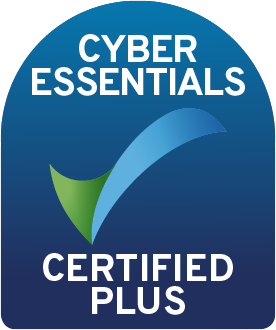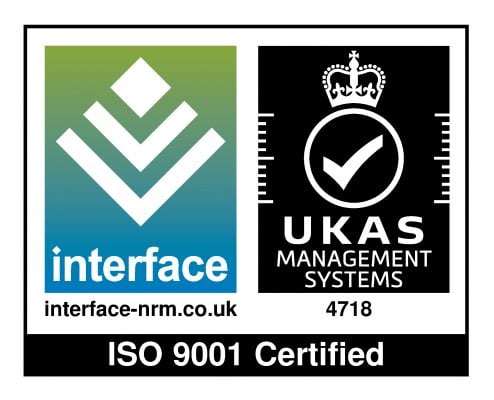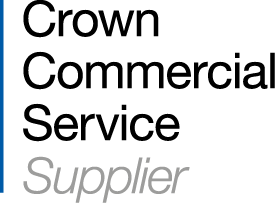A Learning Management System (LMS) is at the heart of modern e-learning and training strategies. Whether you're delivering corporate training, supporting remote education, or managing compliance, an LMS provides the tools to create, deliver, and track learning all in one place.
Despite their widespread use, many organisations are still unsure exactly what an LMS is or how to choose the right one. In this ultimate 2025 guide, we’ll break down everything you need to know about LMS platforms: what they are, how they work, who uses them, and how to find the best fit for your organisation.
What Is an LMS? TL;DR — Key Takeaways
-
What is an LMS?
A Learning Management System (LMS) is a platform that enables users to create, manage, deliver, and track online learning and training programs. -
Core LMS features:
Personalised learning paths, assessments, progress tracking, reporting, mobile/offline access, and integrations with tools like HR and video conferencing. -
Who uses LMSs?
Organisations across healthcare, education, business, and government rely on LMSs for blended learning, compliance, professional development, and scalable training. -
Benefits of modern LMSs:
Cloud-based, mobile-friendly, customisable, and capable of supporting remote and hybrid workforces with interactive, engaging learning experiences. -
How to choose the right LMS:
Define your learning goals, understand your users, prioritise key features, consider flexibility, verify support and security, and evaluate cost versus value. -
Why choose Hubken:
With 20+ years’ experience in open-source LMS like Totara and Moodle, Hubken offers expert guidance and award-winning solutions tailored to your needs.
Let’s start with the basics - what does LMS stand for?
To better understand what an LMS is, let’s first look at what the three letters stand for.
What does LMS stand for? LMS stands for learning management system.
Where did this system originate? The earliest example of a learning management system dates back to the 1920s when Sidney L. Pressey first developed the teaching machine. This machine presented multiple-choice questions and could be programmed so that it only advanced to the next question if the student got the right answer.
Since Pressey’s invention and over the course of many decades, we have seen the development of a number of different innovative learning management systems including Moodle, the first open-source LMS, created in 2000. Today, LMSs have become intelligent, feature-rich, digital-based systems used by countless organisations around the world.

What is an LMS?
A Learning Management System (LMS) is a software platform used to create, manage, deliver, and track online learning and training programs.
An LMS brings together all the essential tools needed to support e-learning, including course creation, content management, assessments, progress tracking, and reporting. It replaces traditional, manual training methods with a digital, scalable solution that improves consistency, saves time, and enhances learner engagement.
While originally used in academic settings, LMS platforms are now widely adopted across a range of industries for purposes such as:
-
Employee onboarding and upskilling
-
Remote and hybrid workforce learning
-
Continuing professional development (CPD)
-
Higher education and blended learning
Modern LMSs such as our Totara Learn solution are cloud-based, mobile-friendly, and often come with advanced functionality such as gamification, personalised learning paths, and integration with other business tools. Whether you're looking to train a small team or thousands of users, a well-chosen LMS can streamline your learning strategy and deliver measurable results.
Key features of a modern LMS
To effectively support the learning and development goals of today’s organisations, a modern LMS must offer a robust set of features. At its core, an LMS should simplify course delivery, support learners at scale, and streamline administrative tasks.
Beyond the basics, many modern LMS platforms (particularly open-source systems) allow for powerful integrations with third-party tools. These integrations can significantly enhance both the learner experience and administrative efficiency by enabling seamless data exchange between systems. This transforms your LMS into a central hub for all learning activities, eliminating the need to switch between multiple platforms.
Common LMS integrations include video conferencing tools (like Zoom or Microsoft Teams), eCommerce platforms, CRM systems, HR software, and social learning tools. These connections allow for smoother workflows, richer content delivery, and better engagement.
There are, however, fundamental features that ensure the LMS delivers value even before any third-party integrations are added. Here’s what you should expect from a standard modern LMS:
- Assignable learning pathways – automatically assign content based on role, skill level, location, or team structure to create personalised learner journeys
- Built-in assessment tools – ensure your learners are retaining information with assessment tools such as test functions, quizzes and the multiple-choice assessment type found in Pressey’s original machine
- Clear progress tracking and reporting – track learner progress through the reporting tools and analytics included in your LMS
- Single Sign-On (SSO) – with single sign-on support, your LMS can be accessed via multiple devices and sites, making it easier for learners to access their learning
- Multi-tenancy - a multi-tenant learning management system is an LMS that can serve multiple user groups within a single platform
- Hierarchies – this feature allows you to mirror the structure of your organisation so that learners will access content relevant to their role, department, permissions etc.
- Offline & mobile learning – with mobile-friendly LMSs such as Totara Learn, which includes a mobile app, learners can download SCORM activities to complete offline, ensuring that learning can be carried out anywhere, regardless of internet access
These core features make it easier to manage, scale, and personalise learning, whether you’re training employees, onboarding new hires, or delivering compliance courses.
Who uses an LMS and why?
A Learning Management System (LMS) is a versatile platform used across industries to deliver training, manage educational content, and monitor learner progress. From schools to global enterprises, organisations use LMS platforms to meet a wide range of learning and development needs.
Here’s a breakdown of who uses an LMS and how it supports their goals:
Blended learning in the healthcare sector
In the healthcare sector, ensuring that staff are properly trained is a necessity that cannot be avoided; in fact, it’s one of the few industries where staff training can actually save lives. With this in mind, it’s important to have a reliable and effective L&D strategy whilst using the right tools for the job. When it comes to healthcare training, the nature of the work will mean that employees will benefit from some practical training. However, this isn’t always easy to carry out as training large numbers of staff in one go can be difficult and costly to organise.
Using an LMS allows you to deploy a blended learning approach, delivering some lessons online via your learning platform along with offline lessons in a practical, face-to-face setting.
For example, theory-based lessons such as compliance, patient safety, or infection control can be completed online. Practical elements, like CPR training, can then be delivered in person. LMS platforms can also offer interactive simulations or gamified scenario training to allow healthcare professionals to practise without risk to patients.
Personalised learning in the education sector
Students all learn differently, so it’s beneficial for individuals to receive a personalised learning programme that is tailored to their requirements. However, this can be time-consuming for teachers to create if done manually, particularly in the higher education sector.
With an LMS, students can easily be placed on a personalised learning pathway. Educators can take a predefined set of criteria and use it to assign a learner journey that ensures the programme is relevant to each user whilst keeping the goals of the learner and organisation in mind.
This approach not only supports learner engagement but also helps academic institutions deliver scalable, consistent, and accessible content across the organisation or for distance learners.
Continuing professional development in a business
A common cause of low employee retention rates is a lack of development opportunities. Creating these opportunities can be time-consuming if done manually, but by using an LMS, you can easily offer employees the chance to progress and grow.
With assessment tools, skill gaps can easily be identified, and employees can be set on a learning path to expand their skills. Employees can also enrol themselves on courses that can be made readily available in your LMS. In doing this, they may wish to complete training that will see them improve in their current role or help them explore other opportunities for progression.
An LMS further supports CPD and enterprise training by acting as a central hub for managing, delivering, and tracking training across your entire organisation. With a single platform to host content, monitor progress, and generate real-time reports, an LMS helps ensure employees are continuously developing the right skills which is essential for any enterprise or business looking to boost productivity and retention.

Compliance training in government organisations
Government organisations often need to deliver mandatory training at scale, while ensuring content is securely delivered and only accessible to the right people. An LMS allows for automated compliance training by using hierarchies, permissions and notifications to assign training based on role, department or location.
Administrators can also use reporting features to track who has completed their training and generate audit-ready records, helping the organisation stay compliant with evolving regulations.
The perfect training tool for any sector
From corporate training and compliance to student education and non-profit outreach, LMS platforms play a crucial role in delivering effective, scalable learning experiences. Whether you're managing a global workforce or educating the next generation, a learning management system provides the tools you need to streamline training, track progress, and improve outcomes.
For real-world on how organisations in various sectors are using LMSs, visit our case studies page.
Choosing the right LMS for your organisation
Now that you have a better understanding of what an LMS is, it may be time for you to find the perfect solution to suit the needs of your business or organisation.
With so many learning management systems available, finding the right one for your organisation can feel overwhelming. Whether you're looking to improve employee training, support remote learning, or manage compliance requirements, the best LMS for you will depend on your specific needs, goals, and budget.
Here are a few key factors to consider when selecting the right LMS:
1. Define your learning objectives - Clarify what outcomes your LMS should help you achieve.
2. Understand your audience (who is going to be using your LMS?) - Identify your users’ needs, skills, and learning preferences.
3. Prioritise key features - Focus on must-have LMS tools like assessments, reporting, and integrations.
4. Consider flexibility and customisation - Choose an LMS that adapts to your organisation’s unique workflows and branding.
5. Check support and security - Ensure your chosen LMS provider offers strong customer support and robust data protection.
5. Evaluate cost vs value - Balance upfront costs with long-term benefits and ROI of the LMS.
By taking the time to evaluate your needs and compare options, you can confidently choose an LMS that supports your learning goals, adapts as you grow, and delivers measurable impact across your organisation.
Why choose Hubken as your LMS partner?
Once you’ve defined your LMS requirements, the next step is choosing the right provider, and that’s where Hubken comes in.
At Hubken, we’ve been delivering powerful, scalable, cost-effective, and award-winning learning management systems for over 20 years. We specialise in open-source LMS solutions like Totara Learn and Moodle, helping organisations across all sectors, including healthcare, education, government, and business, to transform their learning strategies.
Whether you're implementing an LMS for the first time or upgrading from an outdated system, our team is here to guide you every step of the way. Book a call with one of our experts to get started today.
LMS FAQs
What does LMS stand for?
LMS stands for Learning Management System, an L&D platform designed to deliver, manage, and track online learning and training.
How does an LMS benefit businesses and organisations?
An LMS streamlines training delivery, supports remote learning, tracks progress, ensures compliance, and helps upskill employees efficiently.
What are the essential features of a modern LMS?
Key features include personalised learning paths, assessments, reporting tools, mobile/offline access, single sign-on (SSO), and integration capabilities.
How do UK enterprises typically structure LMS procurement and evaluation?
UK enterprises usually start by clearly defining their learning and development goals, then researching LMS platforms that meet those needs. They assess key features, integrations, and budget constraints before conducting demos or trials with shortlisted vendors. Evaluation focuses on user experience, reporting capabilities, and customer support. Once the ideal LMS is selected, they negotiate contracts and proceed with implementation, followed by ongoing support and performance review.
How does LMS technology support UK apprenticeship program management?
LMS technology helps UK apprenticeship programs by centralising training delivery, tracking apprentice progress, and ensuring compliance. It supports training providers and employers with streamlined admin, consistent training content, and real-time performance insights, helping meet regulatory and funding requirements more efficiently. Find out more about apprenticeship management with an LMS by visiting our use case page.
What is a Learning Management System and how does it transform enterprise training?
A Learning Management System (LMS) is a software platform that enables organisations to manage, deliver, and track employee training in a single, central location. It transforms enterprise training by making learning more efficient, scalable, and data-driven. With an LMS, businesses can streamline their training processes, ensure the consistent delivery of learning content, and gain valuable insights through reporting and analytics. This enables organisations to close skill gaps, maintain compliance, and support continuous employee development across teams, ultimately driving better performance and retention at scale.
Why are 87% of organisations migrating to cloud-based LMS platforms?
87% of organisations are making the switch to cloud-based LMS platforms due to the significant benefits in cost-efficiency, accessibility, and scalability. Unlike traditional on-premise systems, cloud-based LMS solutions, like those delivered by Hubken, offer lower upfront investment, predictable subscription-based pricing, and no need for ongoing hardware maintenance. They also support anytime, anywhere access to training materials, making them ideal for remote and hybrid teams. As organisational training needs grow, cloud-based platforms can easily scale to support more users, content, and functionality, making them a future-proof choice for modern L&D strategies.

Explore HubkenCore – our unique SaaS LMS offering
Ready to see how our new LMS bundled solution is revolutionising how you purchase an e-learning solution?
.png?width=1080&height=150&name=Slim%20blog%20CTAs%20(12).png)



